Recent Water Damage Posts
Water Damage Cleanup & Repair: What You Need to Know
7/31/2024 (Permalink)
Water damage can occur in countless ways—whether from a sudden storm, a leaking appliance, or a burst pipe, the aftermath can be devastating. Understanding the cleanup and repair process is crucial to restoring your home to its former condition and preventing long-term issues. Here’s a quick guide to navigating water damage cleanup and repair.
Step 1: Assess the Damage
Before any cleanup begins, it’s important to assess the extent of the water damage. This involves checking affected areas, including walls, floors, and ceilings, to determine how much water has infiltrated and what materials may need replacing. Documenting the damage with photos can also be helpful for insurance claims.
Step 2: Ensure Safety
Safety is paramount when dealing with water damage. Ensure that the electricity is turned off in affected areas and avoid wading into standing water if you're unsure of its depth or the safety of electrical outlets. Use protective gear, such as gloves and masks, to shield yourself from potential contaminants.
Step 3: Water Extraction
The next step is to remove standing water as quickly as possible. This can be done with pumps and wet vacuums. The faster you can get the water out, the better chance you have of minimizing damage and preventing mold growth.
Step 4: Drying and Dehumidification
Once the water has been extracted, the area must be thoroughly dried and dehumidified. This involves using fans, dehumidifiers, and HVAC systems to circulate air and remove moisture from the air and surfaces. This step is crucial since lingering moisture can lead to mold formation and structural damage.
Step 5: Cleaning and Sanitizing
After drying, it’s essential to clean and sanitize all surfaces that came into contact with water. This includes disinfecting floors, walls, and personal items to ensure that harmful bacteria and mold spores are eliminated.
Step 6: Repair and Restoration
Depending on the severity of the damage, repairs may be necessary. This could include replacing drywall, fixing flooring, or restoring any damaged belongings. A restoration professional can help you determine the best course of action for each affected area.
Conclusion
Water damage can be overwhelming, but understanding the cleanup and repair process can help alleviate some of the stress. If you find yourself facing water damage in your home, don’t hesitate to reach out SERVPRO of East Concord / Brentwood for professional help. Time is of the essence, and acting quickly can make all the difference in restoring your property and ensuring a safe living environment.
Stay proactive in maintaining your home and be prepared for the unexpected; after all, it’s always better to be ready than to react when disaster strikes! Contact us (925) 420-5104
Understanding the different types of water damage
7/25/2024 (Permalink)
Not all water damage is created equal. Understanding the different types can help you respond more effectively:
- Clean Water Damage: This comes from sources like broken pipes or rainwater. It's the least harmful but should still be addressed quickly to prevent further issues.
- Gray Water Damage: This type involves water from appliances like washing machines or dishwashers. It contains some contaminants and can cause illness if ingested.
- Black Water Damage: The most severe, this involves water from sewage or flooding from rivers and streams. It contains harmful bacteria and pathogens.
Knowing the type of water damage you’re dealing with can help you take the appropriate action. Always consult a professional like SERVPRO of East Concord / Brentwood for a thorough assessment and remediation.
Beyond Restoration: The Vital Role of Professional Restorers in Emotional Recovery
2/4/2024 (Permalink)
When disaster strikes and wreaks havoc on homes and lives, the emotional toll can be just as profound as the physical damage. Professional restorers, often unsung heroes in the aftermath of calamities, play a crucial role not only in repairing structures but also in aiding emotional recovery. In this blog, we explore how these professionals extend beyond their technical expertise to become pillars of support in the journey towards healing and restoration.
Empathy as a Foundation
Professional restorers understand that their clients are not just dealing with damaged property but also facing the emotional distress that accompanies such events. They approach their work with empathy, recognizing the human side of the restoration process.
Effective communication is a cornerstone of emotional recovery. Professional restorers keep clients informed about the restoration timeline, procedures, and any unexpected challenges. Transparent communication builds trust and helps alleviate anxiety during the recovery process.
Guiding Through the Process
For individuals grappling with the aftermath of a disaster, the restoration process can be overwhelming. Professional restorers serve as guides, explaining each step, setting realistic expectations, and providing a roadmap for the journey ahead. This guidance is crucial for emotional reassurance.
Beyond the monetary value of possessions, sentimental items hold emotional significance. Professional restorers approach the restoration of personal belongings with the utmost care and respect. They understand the emotional attachment clients have to certain items and work diligently to salvage and restore them whenever possible.
Creating a Sense of Normalcy
Disasters disrupt the familiar routines and surroundings that provide comfort and stability. Professional restorers strive to restore a sense of normalcy by efficiently and effectively reconstructing damaged structures. This contributes significantly to the emotional recovery of those affected.
Recognizing the psychological impact of disasters, some restoration companies collaborate with mental health professionals. This collaboration ensures that clients have access to emotional support services, fostering a holistic approach to recovery.
Compassionate Restoration
Professional restorers approach their work with compassion. They understand that behind each damaged wall or water-soaked floor lies a story of disruption and distress. By approaching restoration with compassion, they contribute to the emotional healing of their clients.
Emotional recovery is a nonlinear process, and everyone copes at their own pace. Professional restorers accommodate the individual needs of clients by offering flexible scheduling options. This flexibility helps clients regain a sense of control over their lives.
Post-Restoration Support
Emotional recovery extends beyond the completion of the restoration process. Professional restorers often provide post-restoration support, checking in with clients to ensure their ongoing well-being and addressing any lingering concerns.
In the aftermath of a disaster, communities come together to support one another. Professional restorers actively participate in this process, contributing to the rebuilding of not just structures but also the social fabric of the community.
In the aftermath of disasters, the role of professional restorers transcends the physical act of rebuilding. They become beacons of hope, guiding individuals through the emotional wreckage and helping them rebuild not just their homes but their lives. By combining technical expertise with empathy, communication, and a commitment to holistic well-being, professional restorers contribute significantly to the emotional recovery of those navigating the challenging journey of post-disaster restoration.
What Is The Difference between Flood Damage and Water Damage?
10/31/2023 (Permalink)
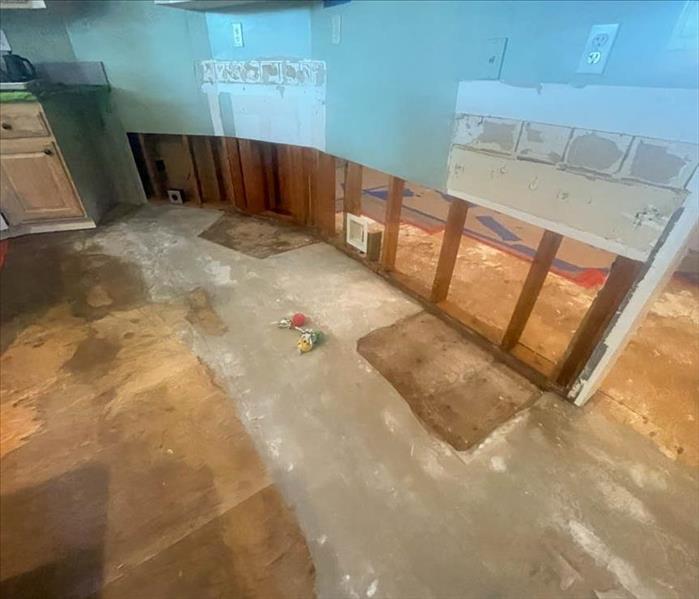 If you encounter either type of damage in your Brentwood home or business, SERVPRO® of East Concord/Brentwood is here to help you.
If you encounter either type of damage in your Brentwood home or business, SERVPRO® of East Concord/Brentwood is here to help you.
Here in Brentwood, CA, water-related incidents can occur, and distinguishing between flood damage and water damage is crucial for effective response and recovery. In this blog, we will explore the key differences between these two types of damage, helping residents better understand the nature of these challenges and how to address them.
Source of Water
Flood damage typically originates from natural events, such as heavy rain, rising river levels, or storm surges. In Brentwood, this could happen during severe weather conditions or in areas near bodies of water.
Water damage, on the other hand, usually results from internal factors like plumbing leaks, burst pipes, appliance malfunctions, or roof leaks. These incidents are often localized and unrelated to external weather events.
Extent of Water Exposure
Floodwaters can inundate large areas, affecting entire neighborhoods or even communities. The volume of water involved in a flood event is extensive and can result in widespread destruction.
Water damage incidents tend to be more contained and localized. They may affect specific rooms or areas within a property, rather than encompassing entire structures.
Water Contamination
Floodwaters often carry contaminants such as mud, debris, sewage, and chemicals from various sources. This contamination poses health risks and necessitates thorough cleaning and disinfection.
While water from burst pipes or leaks is typically cleaner, it can still lead to mold growth if not addressed promptly. Clean water damage can escalate to secondary damage over time.
Insurance Coverage
Standard homeowner's insurance policies usually do not cover flood damage. Brentwood residents may need to purchase separate flood insurance policies through the National Flood Insurance Program (NFIP) or private insurers.
Water damage caused by internal factors is often covered by standard homeowner's insurance policies. However, it's essential to review your policy to understand the extent of coverage and any limitations.
Restoration and Cleanup Process
The restoration process for flood damage typically involves extensive cleanup, decontamination, and structural repairs. It may also require specialized equipment and expertise to address contaminants.
Water damage restoration typically focuses on drying affected areas, repairing or replacing damaged materials, and preventing mold growth. It often involves the use of air movers, dehumidifiers, and moisture detection equipment.
Understanding the differences between flood damage and water damage is essential for preparedness and recovery. While both can be disruptive and damaging, the source, extent, and insurance coverage vary significantly between the two. If you encounter either type of damage in your Brentwood home or business, SERVPRO® of East Concord/Brentwood is here to assist you. Our trained professionals have the expertise and equipment to address both flood and water damage, ensuring your property is restored to its pre-damage condition.
6 Common Sewage Problems in Buildings: Is Your Property at Risk?
7/13/2023 (Permalink)
Maintaining a properly functioning sewage system is essential for the smooth operation and hygiene of any building. However, over time, various issues can arise that hinder the efficient disposal of wastewater and sewage. In this blog post, we will discuss some of the common sewage problems that buildings may encounter. By identifying these issues early on, you can take appropriate measures to address them promptly and ensure a clean and healthy environment for all occupants.
Clogged or Blocked Drains
One of the most prevalent sewage problems is clogged or blocked drains. This can occur due to a buildup of grease, hair, soap residue, or other debris that restricts the flow of wastewater. Clogged drains can lead to unpleasant odors, slow drainage, and even sewage backups. Regular drain maintenance, including periodic cleaning and the use of drain screens, can help prevent such issues.
Sewer Line Blockages
Beyond individual drain clogs, buildings may face sewer line blockages. These blockages often occur due to the accumulation of materials such as tree roots, sediment, or foreign objects in the sewer pipes. As a result, wastewater may back up into the building or cause slow drainage throughout the property. Regular inspections and professional sewer line cleaning can help identify and prevent such blockages.
Leaking or Damaged Pipes
Leaking or damaged pipes can cause significant sewage problems in a building. Aging infrastructure, corrosion, shifting foundations, or external factors can all contribute to pipe deterioration. Leaks not only waste water but can also lead to structural damage, mold growth, and foul odors. Prompt repairs or replacements of damaged pipes are crucial to maintain a healthy sewage system.
Septic System Issues
In buildings with septic systems, specific problems can arise. If a septic tank is not regularly pumped and maintained, it can become overloaded and lead to sewage backups or odors. Additionally, excessive water usage or improper disposal of non-biodegradable items can strain the septic system's capacity. Regular inspections and adherence to recommended maintenance practices are essential to avoid septic system failures.
Improper Slope or Ventilation
A building's sewage system relies on proper slope and ventilation to ensure the efficient flow of wastewater. If the pipes do not have the correct slope, gravity cannot assist in the drainage process, leading to slow drainage or backups. Similarly, inadequate ventilation can cause air pressure imbalances, resulting in sewer gas odor entering the building. Consulting with plumbing professionals during construction or renovations can help ensure proper slope and ventilation for an optimal sewage system.
Inadequate Grease Traps
Commercial kitchens or buildings with food service areas must have properly functioning grease traps or interceptors. Without effective grease removal, fatty substances can accumulate in the sewage system, causing blockages and backups. Regular maintenance, cleaning, and disposal of grease waste in accordance with local regulations can prevent such issues.
A well-maintained sewage system is crucial for the smooth operation and hygiene of any building. By being aware of common sewage problems such as clogged drains, sewer line blockages, leaking pipes, septic system issues, slope and ventilation problems, and inadequate grease traps, building owners and managers can take proactive measures to prevent or address these issues. Regular inspections, timely repairs, and adherence to recommended maintenance practices will help ensure a healthy and efficient sewage system, promoting a clean and safe environment for all occupants.
How to Prevent Water Damage on Vacation
3/9/2023 (Permalink)
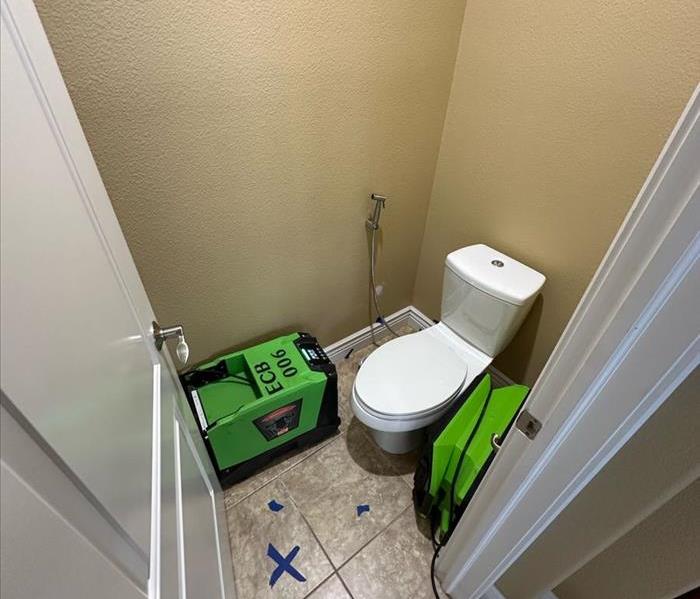 Water damage is serious, don't wait. Call us today!
Water damage is serious, don't wait. Call us today!
Vacation is a time for relaxing and unwinding. You should be able to focus on yourself, your family, and friends without having to worry about home maintenance issues. However, if you have an issue with water damage while on vacation it's important to look into it right away rather than waiting until you return home. Here are some tips to help prevent damage while you're away from home.
Check the pipes regularly
Check your pipes for leaks. Look at them from the bottom and make sure that no water is leaking out of any joints or seams. If you find a leak, turn off the water supply immediately and call a professional to fix it. This is especially important if there are children in your home because they may not know how dangerous this situation can be if left unattended.
If there's no sign of leaking or flooding around your house but something still seems off, it might be time to call someone anyway! Water damage can occur slowly over time due to small problems like these. So even if nothing looks amiss right now, it could become apparent later on (and cost more money).
Turn off the water supply
The first step to preventing water damage on vacation is to turn off the water supply at the main valve. It's important that you know where this is located before leaving for vacation, and if you're not sure how to do it yourself, contact a plumber. If you're going to be away for an extended period, let your neighbors know. Make sure they have your contact information and ask them to call if they notice any issues with your home. Ask them to check on the house regularly.
Water damage can be a serious problem for your home, but it's also one that can be prevented. By taking the steps outlined above you'll ensure that your property has the best chance at avoiding water damage while you're away on vacation. Give SERVPRO of East Concord/Brentwood a call at the first sign of water damage in your home. Our technicians have the experience and expertise to restore your property to pre-water conditions and are available 24/7, 365.
The Difference Between Water Mitigation and Water Damage Restoration
2/15/2023 (Permalink)
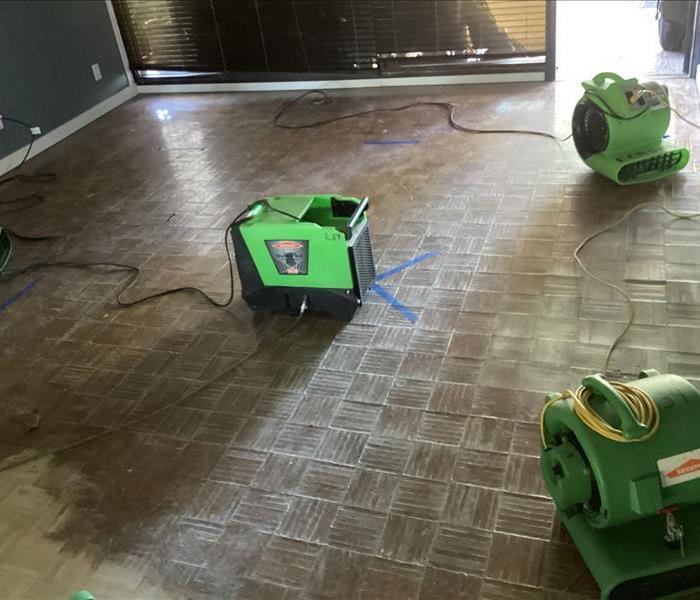 When your property suffers a water loss, give SERVPRO a call!
When your property suffers a water loss, give SERVPRO a call!
Water mitigation and water damage restoration are two terms used to describe different processes that occur after a water loss. Many people think these two terms mean the same thing, but they are actually very different. Water Mitigation is the process of mitigating the damage to your property after a loss has occurred. This can include drying out carpeting, replacing appliances and furniture that have been damaged by moisture, cleaning walls and repairing plaster.
Water Damage Restoration occurs after mitigation in which the interior portion of your home has already been dried out but may still have some lingering signs of water damage. The purpose of this process is to ensure that secondary damages don't occur.
How does water mitigation work?
Water mitigation is a proactive step to avoid further water damage. This process involves stopping the spread of water and fixing any damage done by the leak before it can wreak havoc on your home. Most insurance companies require you to hire a professional for water mitigation rather than doing it yourself, but if you're handy with tools and have some experience in DIY projects, there are some things that can be done at home as well.
What are the steps involved in water damage restoration?
Water damage restoration is a process that includes the following steps:
- Dry out your home or business with dehumidifiers and air movers.
- Remove and dispose of wet materials that can't be salvaged, such as drywall, insulation and carpeting. If you're unsure if something can be saved, it's best to just discard it rather than risk further damage down the road.
- Clean and disinfect all surfaces in your home or business so that mold doesn't grow later on (plus this will make sure it smells fresh again!). Also look into getting your carpets professionally cleaned once you've finished this step — trust us, they'll thank you later.
- Paint any areas where paint has been damaged during the flooding with one coat of primer and two coats of paint (or whatever is specified by a professional). And don't forget about repairing any broken windows or doors before replacing them!
Who handles water damage mitigation and restoration?
As you can see, there's a lot to know about water mitigation and water damage restoration. The difference between the two is crucial, but so is knowing the right person to call when disaster strikes. That's why it's important to partner with a professional like us at SERVPRO of East Concord/ Brentwood. With our help, you'll be well on your way towards avoiding disastrous results and getting everything back on track as quickly as possible.
We're here for you 24/7/365—no matter what happens or when it happens—and no one knows better than we do how important it is to have a plan in place before an emergency occurs. It may seem like an inconvenience now; but trust us: You'll thank yourself later!
Water Mitigation vs Water Restoration
Water mitigation is a technique that helps stop the spread of water and damage to a structure before it gets worse. Water damage restoration refers to any action taken after the water has already touched your home or business, including drying out carpets, walls, floors and furniture. You'll also see "water remediation" or "water removal" used in reference to these services—they're basically interchangeable terms for how you got your wetness problem fixed up.
Water mitigation isn't always necessary: sometimes all you need is cleanup help from someone who knows how to get rid of damaged carpeting fast. In other cases though (like when an entire apartment flooded), it makes sense to call in experts who can restore everything back into good shape again as best possible
It's important to know what you can do if your home is damaged by water. Knowing the difference between restoration and mitigation will help you make the right decision for your situation. For more information on how we can help, call us today!
What Is a Category Three Water Damage?
11/1/2022 (Permalink)
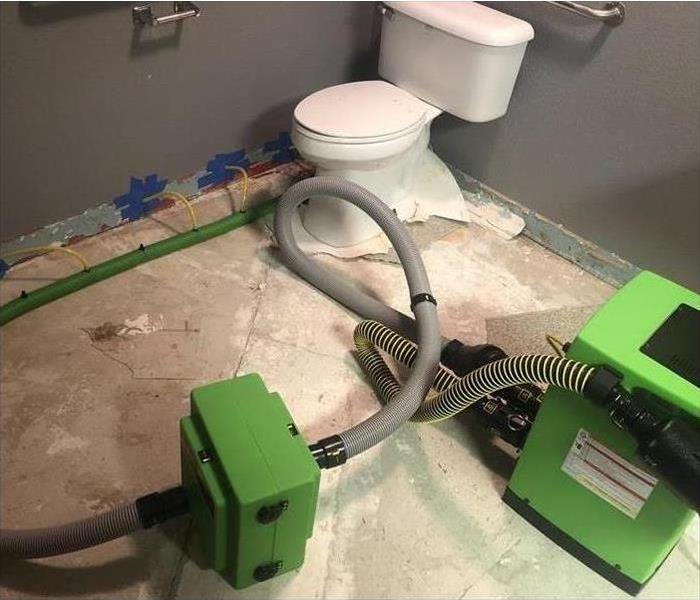 Water damage restoration using special equipment.
Water damage restoration using special equipment.
What Is a Category Three Water Damage?
Water damage can happen in any home at any time. However, not all types of water damage are considered the same. There are three different categories of water damage.
There are different levels of contamination when looking at categories of water damage.
When categorizing water damage, there are several levels of contamination that can result in a variety of different categories.
- Category One - The most severe category, category one is considered to be "worse than bad." This type of damage is caused by sewage or human waste. It's important to note that this type of water damage can cause sickness from harmful bacteria and viruses; if you suspect you've been exposed to this kind of contaminated water, see your doctor immediately.
- Category Two - Water damage with moderate levels of contamination falls under category two and includes any other kind of bodily fluid (blood, vomit) or any other organic material (foods). If you suspect you've experienced category two water damage in your home, contact a professional for help with cleanup as soon as possible.
- Category Three - This level involves less severe contaminants like fecal matter from pets or wild animals; however since those animals may carry disease-causing organisms such as salmonella or E-coli., it's important not to take any chances when dealing with this type of dirty water!
Category Three water damage is a loss that involves unsanitary water.
Category Three water damage is a loss that involves unsanitary water, which could be known as “black water,” grey water," or "category three" water.
Category three water damage is unsanitary, so it has the potential to be harmful to humans and animals. Black water is considered unsanitary because it can contain sewage, flood waters, or other sources. Black water contains bacteria, viruses, and parasites that cause disease in people and animals.
This type of water damage comes from a septic tank or sewer. It contains human waste which can be harmful to humans and animals. This type of category three water damage must be contained immediately, treated, and removed from the property by a professional restoration company.
If you see any type of standing liquid in your home, there is a possibility that it was contaminated with sewage waste. It is important to call your local SERVPRO experts to handle the mitigation.
You can't treat all types of contaminants the same way.
If you have Category 1, 2, or 3 contamination in your home, we recommend contacting us immediately so we can help guide you through the necessary remediation process. We will come out and perform tests on your property and determine what category your loss falls into. Once we know what kind of contamination has occurred, we will tell you what kinds of steps need to be taken next so that everyone stays safe moving forward.
You can't treat all types of contaminants the same way: For example, if there is a sewage spill in your basement (which may include things like toilet paper), common household cleaners won't do much good—you'll need professional help.
There are many categories for categorizing different types of water damage.
Category One and Category Two water damage are considered to be less severe than category three. However, they can still cause a lot of damage to a home. Category Three is the worst type of water damage and can cause thousands of dollars worth of additional expenses for you if it goes unchecked for too long.
Water damage can be very dangerous if you don't know what type of contamination is in it. Call your local mitigation experts for all your water damage cleanup and restoration needs as quickly as possible after a loss to keep yourself and others on your property safe!
How To Clean Up Water From a Wood Floor
8/30/2022 (Permalink)
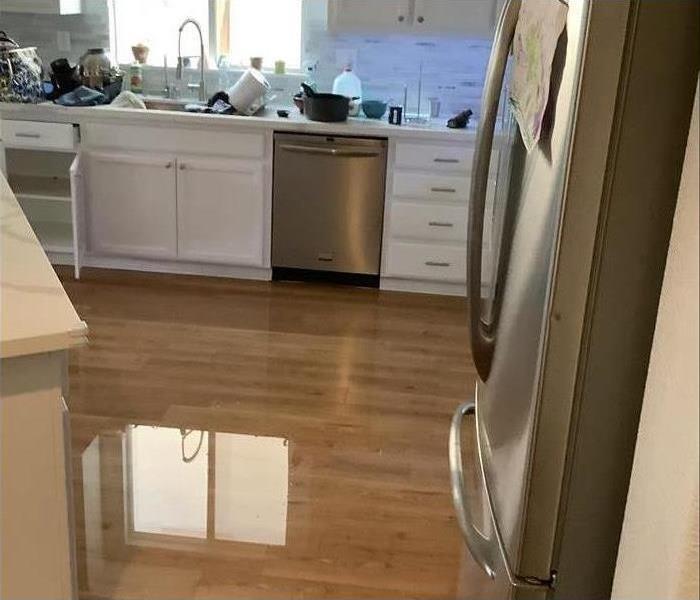 Water damage in East Concord, CA.
Water damage in East Concord, CA.
How to Clean a Wood Floor of Water
Wood floors are prized for their elegance and functionality. However, they are sensitive to moisture. If a pipe burst or other incident leads to prolonged water exposure, the wood may suffer from cracking and warping. In addition, water can seep through the wood panels and enable mold growth.
Here are some tips on how to take care of your floor if you see a water spill.
1. Move Furniture and Other Objects Away From the Spill
First, you want to make sure that you can see the full extent of the spill. A pipe burst could lead to a wet floor, and you may not be able to see the whole spill until you move furniture away.
2. Dry the Wood Floor
Depending on the amount of water, you may be able to soak up water effectively with towels. If you have a wet vacuum, you can use it to remove larger amounts of water. A wet vacuum is the best way to remove water from a wood surface because it will be able to suck up water that has started to spread under the floorboards.
3. Use a Disinfectant
A disinfectant designed for wood floors will help you fight against mold. Once you are done disinfecting, it is a good idea to use the wet vacuum again to get rid of moisture.
4. Set Up Fans and a Dehumidifier
Fans will help with air circulation, and a dehumidifier will catch any moisture left over from the spill or the cleaning process.
5. Call a Professional if Necessary
If a pipe burst causes a large spill, it may be necessary to hire professional water restoration services. A team of professionals in East Concord, CA, will be able to provide equipment and expertise that you may not have on your own.
Following these steps will help you protect your wood floors from water and keep them in top condition.
Effective Strategies for Preventing Commercial Toilet Clogs
6/21/2022 (Permalink)
Preventing Commercial Toilet Clogs
Toilet clogs in East Concord, CA, businesses may result in unpleasant smells, unsightly messes, and unhappy customers. How can you ensure that your commercial restrooms stay pristine and operational? The following strategies will keep sewage off your floors and in the pipes where it belongs.
Limit Access to Items That Cause Toilet Overflow
Limit the products available in your restrooms to just those that are safe to flush. Some common clog culprits to avoid are:
- Baby wipes
- Sanitary napkins
- Facial tissues
Switching from disposable paper towels to hand dryers may also cut down on the number of clogs you experience.
Display Signs and Placards
Enlist the help of restroom users by hanging up signs that discourage flushing anything other than toilet paper. Handwritten signs or professionally made placards are both excellent ways to communicate what is and isn’t safe to flush.
Install Additional Trashcans
Having an appropriate number of trash receptacles is an essential step for avoiding a clogged toilet. After all, if your customers can’t flush sanitary napkins, paper towels, and baby wipes down your toilets, they’ll need someplace else to dispose of them. Installing individual trashcans in each stall and larger trashcans just inside restroom doors will give your customers plenty of options.
Clean and Restock Restrooms Frequently
Customers are much less likely to flush paper towels and other backup-causing items if toilet paper is readily available and trashcans are empty. No one enjoys dealing with a clogged toilet, so make sure that employees are diligent about bathroom maintenance by creating a cleaning schedule.
Provide a Lighter Ply Paper
You can also prevent overflows by stocking your restrooms with thin, quickly dissolving toilet paper. Choosing a 1- or 2- ply toilet paper will significantly limit the bulk of each flush, as well as the potential for clogs.
Just a single clogged toilet can lead to plumbing problems or even the need for water damage repair. By following these guidelines, you can keep your restrooms fresh and your customers satisfied.
3 Tips for Managing a Flooded Basement
5/4/2022 (Permalink)
Three Ways to Deal with a Flooded Basement
A basement flood in your Concord, CA, home can come from several sources, such as a broken water pipe or an overflowing toilet. These types of floods can occur without warning and leave your basement and its content soaked, but there are a few tips you can keep in mind as you wait for help to arrive.
1. Review Your Insurance Coverage
Some types of flooding are only partially covered by insurance while others require an additional deductible. Calling your local insurance representative to discuss your options can help you feel more confident about the cost of cleaning up a basement flood. Take photos of the damage and send them to your agent so he or she can start a claim for you as soon as possible.
2. Avoid Contact With Floodwater
Basement floods that have an unsanitary source, such as those that come from an overflowing toilet, can carry dangerous bacteria and chemicals that could harm you. Avoid wading into the water and ensure that your sump pump is working properly to drain as much dirty water as it can before assistance arrives. If you find that drainage is an issue, it is a good idea to wait for help to arrive instead of coming into contact with dirty water.
3. Keep the Flood Contained
If your basement has more than one room, then you may want to contain the flooded area by closing and blocking doors so water does not seep through. Use old towels or clothing to line the threshold until your water removal and restoration company arrives to assist you. Keep small children and pets away from the basement until you can manage the flood and make the area safe again.
When a basement flood affects your Concord, CA, home, it can be difficult to know which actions to take right away. Preparing for this water emergency and keeping the above tips in mind can help you remain calm and know when a flood is too big to handle on your own.
3 Tips To Prevent Basement Flooding
3/25/2022 (Permalink)
What To Do If Your Basement Floods?
If you own a home with a basement in Brentwood, CA, you've likely already thought about what to do if your basement floods. But as the saying goes, "An ounce of prevention is worth a pound of cure." Preventing basement flooding before it happens can save you time, stress and money on water damage and pipe repair. Here are three of the best ways to avoid a basement flood.
1. Keep Your Foundation Dry
The largest culprit behind basement flooding is a cracked foundation, as water will naturally follow the path of least resistance. Check thoroughly for any cracks that are leaking in your foundation. If you find any, repair them right away with caulk or hydraulic cement. It's also important to ensure that stormwater is directed away from your foundation. If needed, you can purchase downspout extensions, which help divert the water and aid in keeping your foundation dry.
2. Check Your Windows
If you have window wells (a window that is below grade), it's easy for water to collect there and potentially lead to flooding. Using window well covers can prevent this from happening. If you have any other external windows or doors in your basement, check them regularly to ensure their seals are water-tight.
3. Invest in a Flood Alarm
Flood alarms are sensors that track differences in moisture levels and are installed by your baseboards. They're perfect for smart homes, as they connect easily and alert you if it detects any flooding. This way, you can head off any potential basement flood and get a handle on it before it escalates and requires professional mitigation or pipe repair.
Keeping your basement dry is one of the best ways to protect your home and its contents. No method of prevention is foolproof, but using a combination of these and other prevention tips can greatly lessen your chances of flooding in your basement.
What You Need To Know About Cleaning Up After Pipes Break
1/19/2022 (Permalink)
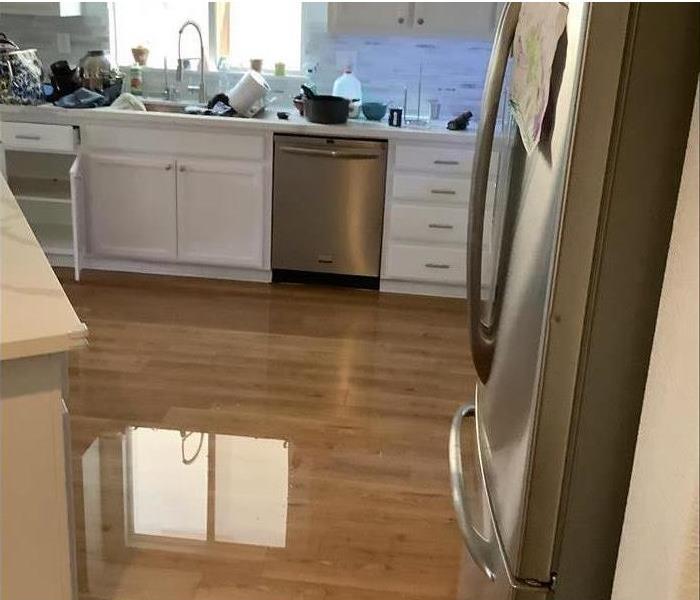 SERVPRO has team members ready 24/7/365 to assist you after any kind of water damage. Call us!
SERVPRO has team members ready 24/7/365 to assist you after any kind of water damage. Call us!
What You Should Know About Cleaning Up After a Pipe Burst
At some point, just about every homeowner in Brentwood, CA, is going to experience some sort of plumbing or water issue. Some of these incidents may be minor and won’t have significant problems. However, if you’ve had bursting pipes in your house, the results can be devastating. This is why it’s important to act quickly, correct the issue and clean up effectively.
How To Get Started
As soon as you realize water is leaking onto your floor, into the walls, or under sinks or cupboards, you need to jump into action. The faster you respond, the more likely you’ll contain the water damage, stop the leak and successfully clean up the affected area. Here’s a rundown of how to react once you spot a pipe burst.
• Pinpoint the source of the problem.
• Turn off the water.
• Contact a plumber.
• Contact a water cleanup company.
Identify the Problem
If you have bursting pipes in your home, it may seem obvious where the issue is coming from. However, you may know which pipe bust, but you also want to know why it happened if possible. The same issue causing one pipe to burst may cause another one to burst as well.
Turn Off the Water
To prevent more damage to your flooring, walls or other areas, make sure you shut off the water as soon as you know where the water is coming from. This can help stave off mold and other concerns.
Contact a Plumber
To fix a broken pipe may require more expertise than you have. Don’t hesitate to call a skilled plumber. This professional will have the experience, knowledge and equipment to repair the issue.
Contact a Water Cleanup Company
Depending on how long the leak occurred, you could face severe damage. A water cleanup crew can remove any water from your home as well tear out carpet and sheetrock, and clean and sanitize affected areas.
Bursting pipes can cause you fits, but you can minimize the damage and effects. Call a professional immediately.






 24/7 Emergency Service
24/7 Emergency Service





